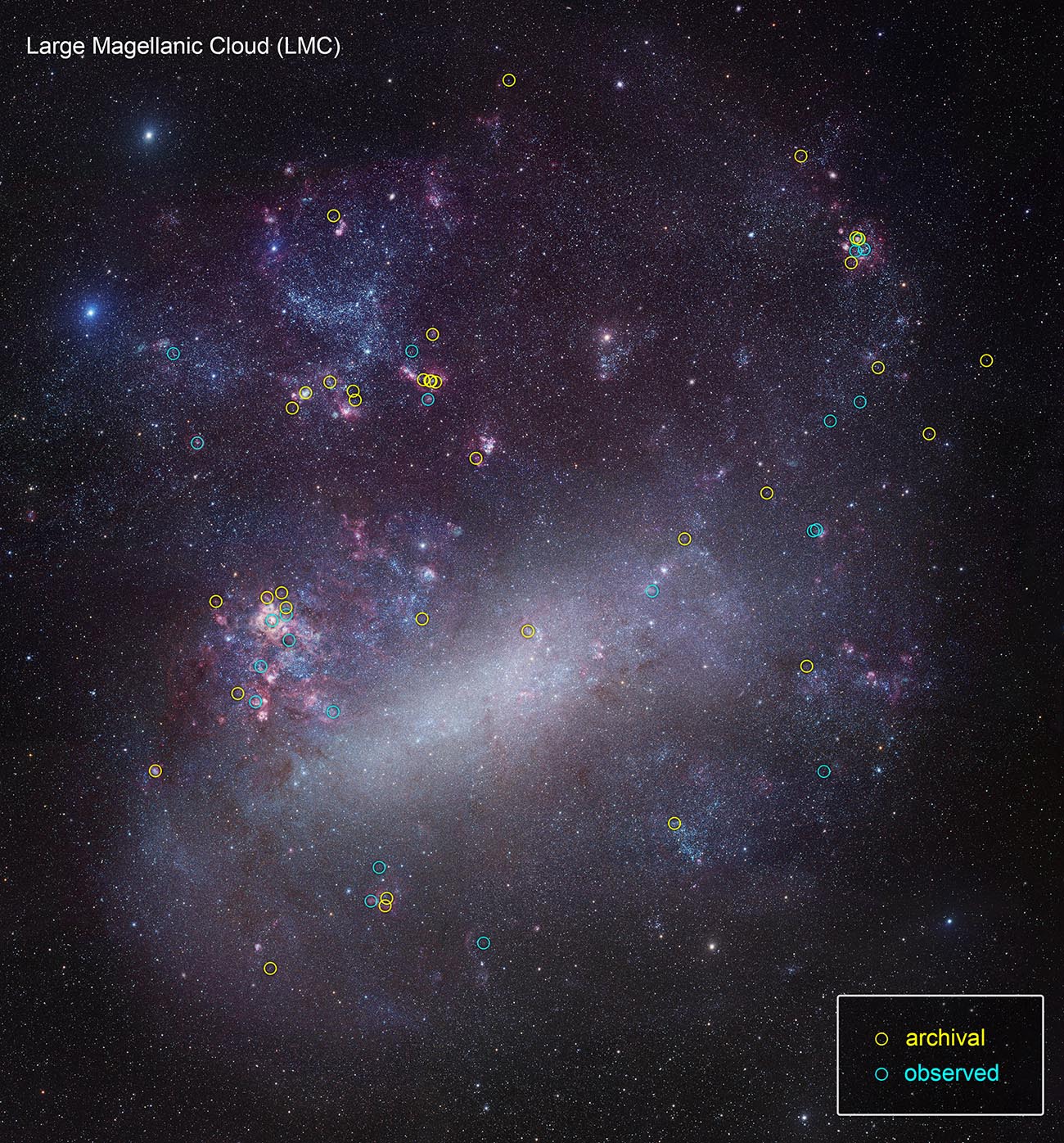STScI: Hubble Launches Large Ultraviolet-Light Survey of Nearby Stars

To better understand stellar evolution, the Space Telescope Science Institute (STScI) in Baltimore, Maryland, has launched an ambitious new initiative with Hubble called ULLYSES (UV Legacy Library of Young Stars as Essential Standards). The Institute is now releasing the first set of ULLYSES observations to the astronomical community. These early targets are hot, massive, blue stars in several nearby dwarf galaxies. CREDITS:NASA, ESA, J. Roman-Duval (STScI), ULLYSES program, and R. Gendler
The universe would be a pretty boring place without stars. Without them, the universe would remain a diffuse plasma of mostly hydrogen and helium from the big bang.
As the basic building blocks of the cosmos, stellar nuclear fusion furnaces forge new heavy elements, enriching their parent galaxy. The radiant energy from stars potentially nurtures the emergence of life on the most favorably located planets, as it did on Earth.
To better understand stars and stellar evolution, the Space Telescope Science Institute (STScI) in Baltimore, Maryland, has launched an ambitious new initiative with NASA’s Hubble Space Telescope, called ULLYSES (UV Legacy Library of Young Stars as Essential Standards).
ULLYSES is Hubble’s largest observing program ever in terms of the amount of time Hubble will dedicate to it. More than 300 stars will be included. Ultraviolet (UV) light from the target stars is being used to produce a library of the spectral “templates” of young, low-mass stars from eight star-forming regions in the Milky Way, as well as fully mature high-mass stars in several nearby dwarf galaxies including the Magellanic Clouds.
“One of the key goals of ULLYSES is to form a complete reference sample that can be used to create spectral libraries capturing the diversity of stars, ensuring a legacy dataset for a wide range of astrophysical topics. ULLYSES is expected to have a lasting impact on future research by astronomers around the world,” said program lead Julia Roman-Duval of STScI.
The Institute is now releasing the first set of ULLYSES observations to the astronomical community. These early targets are hot, massive, blue stars in several nearby dwarf galaxies.
Hubble is located above Earth’s atmosphere, which filters out most UV radiation from space before it reaches ground-based telescopes. Hubble’s ultraviolet sensitivity makes it the only observatory up to the task because young stars radiate a lot of their energy in the UV as they grow chaotically in fits and starts while feeding on infalling gas and dust.
The program’s goal is to give astronomers a much better understanding of the birth of stars and how this relates to everything from planets to the formation and evolution of galaxies. Astronomers want to learn how young low-mass stars affect the evolution and composition of planets forming around them. Intense UV radiation pulls apart molecules and penetrates circumstellar disks, where planets form, influencing their chemistry and affecting how long the disks survive. This has a direct bearing on planet habitability, atmospheric escape, and chemistry. “This unique collection is enabling diverse and exciting astrophysical research across many fields,” Roman-Duval said.
In addition, the torrential outflows of hot gas from fully mature stars that are much more massive than our Sun shape their environments in dramatic ways. By targeting massive stars in nearby galaxies with low abundances in heavy elements, similar to the primitive composition of early galaxies, astronomers can gain insights into how their outflows may have influenced early galaxy evolution billions of years ago.
To learn more about the ULLYSES program, visit https://hubblesite.org/mission-and-telescope/hubbles-ullyses-program
